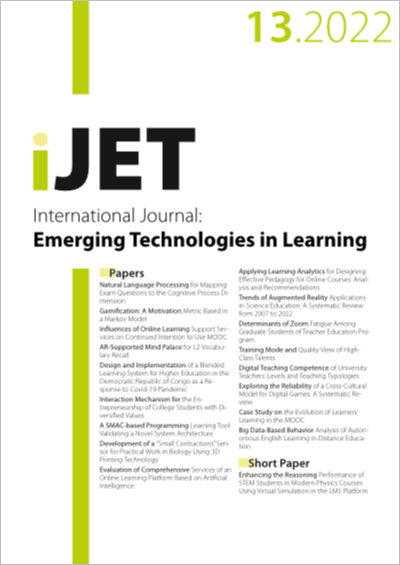Case Study on the Evolution of Learners' Learning in the MOOC
DOI:
https://doi.org/10.3991/ijet.v17i13.30875Keywords:
learning, MOOC, teacher, learners, classify, clustering, profiles, artificial in-telligence, machine learningAbstract
Tracking the evolution of learners' learning in a MOOC supports the e-learning operation and allows teachers to easily manage the massive number of learners enrolled in a distance learning course. In this work we started with a study where we were interested in identifying the common parameters that allow us to have a vision on the evolution of learners through the use of SPSS statistical software. This operation allowed us to determine the level of the learners, classify them and group them into homogeneous groups that facilitated their orientation towards courses that meet the characteristics of their profiles. On the basis of our case study, we were able to develop a computer system approach based on K-means learning software and data pre-processing means, for data mining with the aim of analyzing and revealing the parameters that have a great positive impact on the learners' learning, the system uses the identified parameters to classify and group the learners according to their profiles. This type of system is characterized by its autonomy and the ability to process a large amount of data. On the basis of the data used in our case study, we carried out experimental tests on the proposed system which showed its performance in solving our problem.
Downloads
Published
How to Cite
Issue
Section
License
Copyright (c) 2022 Dhaiouir Ilham

This work is licensed under a Creative Commons Attribution 4.0 International License.



